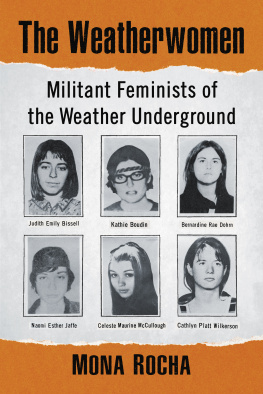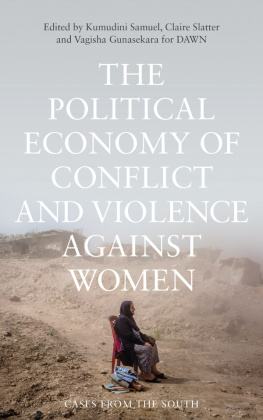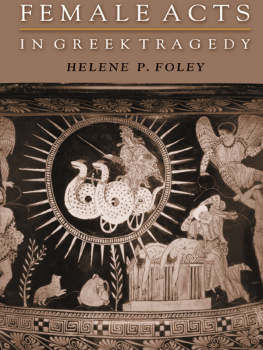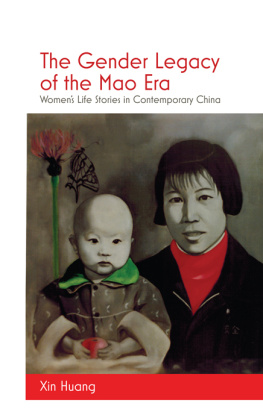
Gender for the Warfare State helps us to think afresh about how we can use literature, including women soldiers own writings, to shed light on and pose new questions about the dynamic relationships between militarism, the liberal state, wars, womens soldiering, and gender ideologies.
Cynthia Enloe, author of Globalization and Militarism: Feminists Make the Link 2e (Rowman & Littlefield, 2016)
Gender for the Warfare State offers provocative insights along a trustworthy road map that lead us all the way back to the earliest intersection of female warrior and literature. In doing so, Goodman provides fresh analysis on both twenty-first century warfare and female subjectivity in combat.
Tracy Crow, author of On Point: A Guide to Writing the Military Story (Potomac Books, 2015)
Gender for the Warfare State
Gender for the Warfare State is the first scholarly investigation into the written works of U.S. women combat veterans in twenty-first century wars. Most recent studies quantify military participation, showing how many women participate in armed services and what their experiences are in a traditionally male institution. Many of these treatments regard women as victims solely of enemy fire, even as they are also often victims of their own military apparatus and of their own involvement in global aggression. By applying literary analysis to a sociological question, Gender for the Warfare State views womens experiences through story and literary traditions that carry meaning into present practices. Goodman shows that women in combat are not just entering and being victimized in male institutions, but are also actively changing the story of gender and thus the structure of power that is constructed through gender. Moreover, this book unveils a new narrative of care that affects economic relations more broadly and the contemporary politics of the liberal social contract.
Womens participation in combat is not just a U.S. event but global and therefore has a deeper historical range than current sociological accounts imply. The book compares the political contexts of womens entry into war now with their prior, twentieth-century contributions to wars in other cultural settings and then uses this comparison to show a variety of meanings at play in the gender of war.
Robin Truth Goodman is Professor of English and Director of the Literature Program at Florida State University. Her recent books include Literature and the Development of Feminist Theory (ed., Cambridge University Press, 2015) and Gender Work: Feminism After Neoliberalism (Palgrave Macmillan, 2013).
Critical Interventions
Politics, Culture, and the Promise of Democracy
Edited by Henry A. Giroux, Susan Searls Giroux, and Kenneth J. Saltman
Twilight of the Social: Resurgent Publics in the Age of Disposability
By Henry A. Giroux (2011)
Youth in Revolt: Reclaiming a Democratic Future
By Henry A. Giroux (2012)
The Failure of Corporate School Reform
By Kenneth J. Saltman (2012)
Toward a New Common School Movement
By Noah De Lissovoy, Alexander J. Means, and Kenneth J. Saltman (2015)
The Great Inequality
By Michael D. Yates (2016)
Elsewhere in America: The Crisis of Belonging in Contemporary Culture
By David Trend (2016)
Scripted Bodies: Corporate Power, Smart Technology, and the Undoing of Public Education
By Kenneth J. Saltman (2016)
Gender for the Warfare State: Literature of Women in Combat
By Robin Truth Goodman (2017)
Gender for the Warfare State
Literature of Women in Combat
Robin Truth Goodman
First published 2017
by Routledge
711 Third Avenue, New York, NY 10017
and by Routledge
2 Park Square, Milton Park, Abingdon, Oxon, OX14 4RN
Routledge is an imprint of the Taylor & Francis Group, an informa business
2017 Taylor & Francis
Chapter 3, A Critique of Violence in the Age of Mechanical Drone Warfare, symploke. Reprinted with permission.
The right of Robin Truth Goodman to be identified as author of this work has been asserted by her in accordance with sections 77 and 78 of the Copyright, Designs and Patents Act 1988.
All rights reserved. No part of this book may be reprinted or reproduced or utilised in any form or by any electronic, mechanical, or other means, now known or hereafter invented, including photocopying and recording, or in any information storage or retrieval system, without permission in writing from the publishers.
Trademark notice: Product or corporate names may be trademarks or registered trademarks, and are used only for identification and explanation without intent to infringe.
Library of Congress Cataloging in Publication Data
A catalog record for this book has been requested
ISBN: 978-1-138-67528-5 (hbk)
ISBN: 978-1-138-67529-2 (pbk)
ISBN: 978-1-315-56078-6 (ebk)
Typeset in Bembo
by Apex CoVantage, LLC
Contents
I am truly indebted to Kenneth J. Saltman, who saw this book through from its very inception. He offered hours of encouragement as well as editorial assistance. In addition, as scholars know, ideas often come to fruition through intense debate and argument, and Ken has been what Hannah Arendt would call my inner interlocutor, sitting inside my head and demanding the world to be better, playing Nil to my Will. In addition, I thank the other series editors, Henry A. Giroux, an inspiration always, and Susan Searls Giroux, and the editor at Routledge, Dean Birkenkamp. I wish to thank others who have offered advice, help, and encouragement over the course of this writing: Anne Coldiron, Tracy Crow, Jeffrey Dileo, David Downing, Cynthia Enloe, Barry J. Faulk, Isabel Careloa Gil, Peggy Kamuf, Irene Padavic, Masood Raja, and Elizabeth Spiller. The Office of Research at Florida State University has supported part of this project through their grant program.
On 6 December 2015, the New York Times published an article called Penis Transplants Being Planned to Help Wounded Troops. In it, reporter Denise Grady gives us uplifting news. Medical science has developed a way to replace penises lost in battle. Despite risks of cancer, organ rejection, infection, and bleeding, surgeons can sew onto live men the penises of dead men, repairing the damage and eventually restoring full utility. This is good news, indeed, as the article estimates that from 2001 to 2003 alone, 1,367 men in military service suffered wounds to their genitals. Everybody agrees, writes Grady, including the caring, long-suffering wives of veterans with infected, mutilated, or impaired penises, that injuries to that organ eroded their husbands sense of manhood and identity. Three serious men with eyeglasses and surgical blues, surrounded by shelves full of test tubes, pill packages, and x-rays, reassure us in a photograph at the articles head that science has at last triumphed over mans deepest fears: that men in battle could be turned into women. We can assume the wives will be happy now, rewarded for their solicitude. The new penises would come replete with urinary function, sensation, erectile function, and maybe, too, fertility. In a flash, then, military science has ended the castration complex and psychoanalytic trauma, adding another layer of dirt over Freuds grave.













